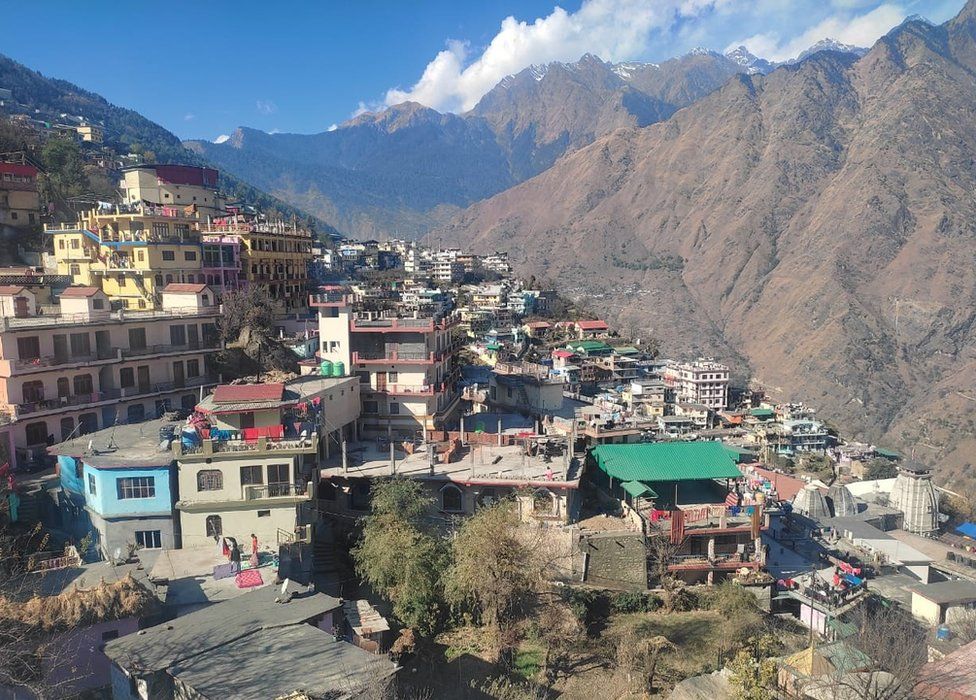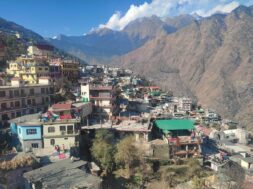
Manas Dasgupta
NEW DELHI, Jan 14: A day after the Indian Space Research Organisation released a report on ground subsidence at Joshimath in Uttarakhand drawing widespread media attention, the National Disaster Management Authority (NDMA) has issued a gag order to the government authorities and scientific departments not to share details with media till a conclusion is drawn.
The Office Memorandum (OM) released by NDMA on Saturday pointed out that the data released by government institutions were creating confusion among residents. “It is observed that various government institutions are releasing data related to the subject matter on social media platforms and they are also interacting with the media with their own interpretation of the situation. It is creating confusion not only among affected residents but also among citizens of the country,” said NDMA.
Pointing out that an expert group has been formed for assessment of ground subsidence at Joshimath, the disaster management agency requested several institutions, including ISRO, to “sensitise their organisation” about this matter and refrain from posting anything on social media platforms until the final report of the expert group is released by it.
The ISRO report had revealed that Joshimath saw a rapid sinking of 5.4 cm in just 12 days. The report said the massive soil sinking occurred due to a “rapid subsidence event that was triggered on January 2, 2023.”
The NDMA has also ordered all concerned departments — including the eight institutions studying the subsidence in the region including Wadia Institute, IIT Roorkee, CBRI, GIS Kolkata, NIDM New Delhi, IIRS Dehradun, NGRI Hyderabad and ISRO — to not interact with the media or share any data on social media.
The NDMA Orders followed the concern expressed by the Uttarakhand government over possible loss in tourism in the next tourist season because of the media reports on “sinking” Joshimath. Uttarakhand Cabinet Minister Dhan Singh Rawat said the state government had a word with ISRO and others, informing them not to share reports that create panic among residents.
Uttarakhand Chief Minister Pushkar Singh Dhami had also asked the media not to portray Joshimath as a town that is literally sinking. “We have international games, Char Dham Yatra [in the days] ahead. Let’s not create panic that Joshimath is all damaged and unsafe,” Mr. Dhami has said.
Joshimath, home to the monastery of Adi Sankaracharya and gateway to the Badrinath temple, is built on the deposits of an old landslide and not on hard rocks which means the slopes can be destabilised even by slight triggers. The town is also in Zone V, denoting highest risk, in India’s seismic zonation scheme.
Joshimath’s geological setting, together with the unplanned and rampant construction in and around the town, has resulted in land subsidence. The ISRO report stated that a subsidence of nearly 9 cm was recorded between April-November 2022. The central part of Joshimath town, army helipad and Narsingh Mandir — the winter seat of Lord Badrinath — have been witnessing rapid subsidence, the images released on ISRO’s National Remote Sensing Centre website showed. The report was later removed from the website on Friday.
Buildings in Joshimath, considered a holy town as it’s a gateway for Hindu and Sikh shrines, developed deep cracks in December last year, triggering panic and swift rescue operations. Around 4,000 families have been evacuated following a satellite survey. For years, environmentalists and locals have warned about indiscriminate construction in sensitive towns like Joshimath. Ignoring many of these calls, the government has widened roads, and built dams and power plants, besides allowing hotels and multi-storey buildings to mushroom.
Apprehension about Joshimath’s future began about three months ago when locals began talking of cracks that began appearing suddenly in many buildings and the roads across the town. Officially, reports were recorded from about a month back. But the panic set in just about a week ago when the widening cracks spread and began appearing at a scary pace. The creeping fear has now spread among residents in the nearby Himalayan towns including Karnaprayag, Munsiari, Dharchula, Pauri and Nainital and even Mussoorie.
Even as people from Joshimath’s around 90 ‘unsafe zones’ and more than 723 damaged houses have been evacuated to safer areas, concerns are also being raised about the safety of the key Indian Army’s cantonment and ITBP establishments in the town. These two military and security set-ups are of critical importance when it comes to sending reinforcements and supplies to the Line of Actual Control, the de facto border with an increasingly assertive China.
With the raging crisis threatening to assume the form of a widening public protest demanding adequate compensation, rehabilitation, stopping construction and ongoing demolition work in Joshimath, fingers are also being pointed at the controversial Char Dham road project and the Rs 16,216 crore rail project to link the four major pilgrimages—Kedarnath, Badrinath, Gangotri and Yamunotri. But various sources corroborate that it has been common knowledge that the Joshimath town had been sinking for decades but at the moment the pace has become frenetic.
There have been prophetic revelations from the past too. About 87 years ago, a Swiss expedition of mountain geologists led by Arnold Heim and August Gansser opened up the Kumaon mountains to the rest of the world about the geology of the region. It was the first study to establish that Joshimath lay not on a hard rock basement but on sand and loose soil that was the remnant of an ancient landslide.
Some experts have also pointed out at the governments ignoring the environmental warnings. “There was no shortage of warnings. The Swiss report first issued the warning in 1936. Earlier Uttar Kashi, Nainital faced problems. It is a fait accompli now. The deed has been done.” “All Himalayan towns are under the wheels of vehicles. Thoughtless and unregulated development in the delicate region without foresight and proper planning has led to this state of affairs. One can only try to alleviate the misery now which will bear a huge cost,” the experts said.
Four decades after the Swiss study, the collector of Garwal MC Mishra was commissioned to probe as to why Joshimath was subsiding. The 1976 report was blatant in its findings. It said Joshimath wasn’t suited to be an urban centre because of its weak foundation and that conditions will only worsen with growing population, increasing construction works, rising traffic and importantly, lack of a sewerage system which led the water discharge into the ground further loosening the foundation on which the town stood.
Joshimath stands at the gateway to quite a few top Hindu and Sikh pilgrimages in the Himalayas. Growing from a quant sleepy hamlet providing shelter to pilgrims to a bustling town of more than 20,000 now, the rate of increase of population pressure it has been facing is mind-boggling.
In 1936, between 50,000 and 100,000 pilgrims hit this trail every year. Cut to 2022, about 10,00,00,000 tourists, the devout and kanwarias—according to a rough estimate—used this route.














